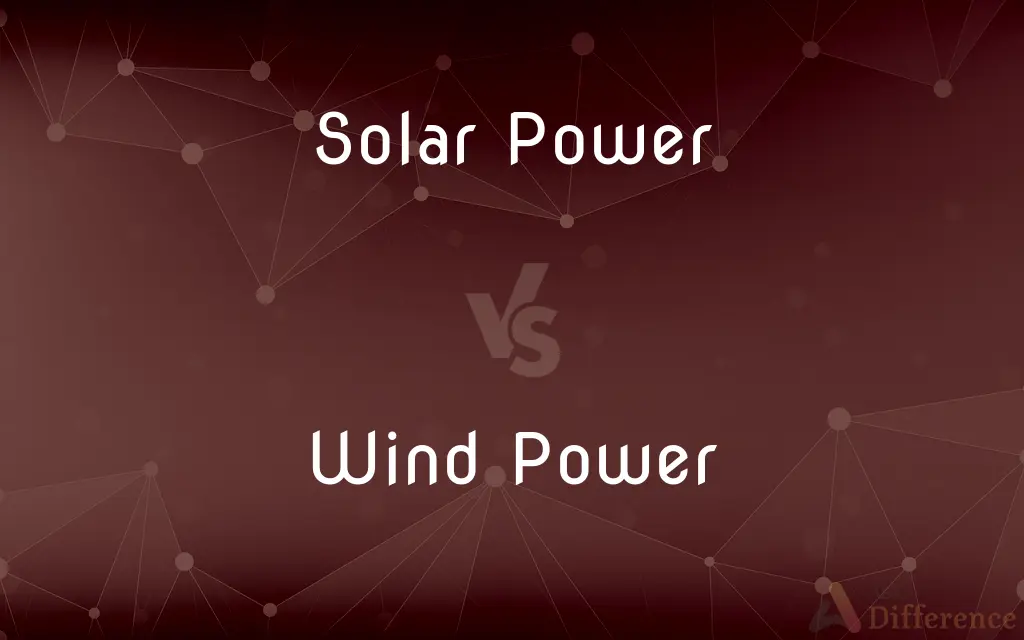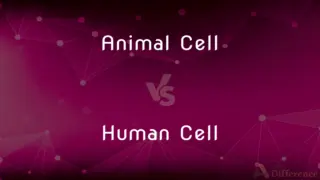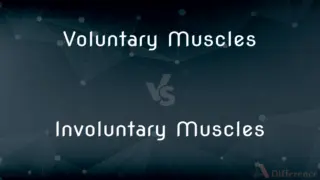Solar Power vs. Wind Power — What's the Difference?
By Tayyaba Rehman — Published on November 3, 2023
Solar Power harnesses energy from the sun’s rays, while Wind Power generates electricity through wind turning turbines. Both are sustainable, but utilize different natural resources and technologies for power generation.

Difference Between Solar Power and Wind Power
Table of Contents
ADVERTISEMENT
Key Differences
Solar Power represents an energy type that is derived directly from the sun's radiation and transformed into heat or electricity. It predominantly utilizes photovoltaic cells, commonly seen in solar panels, to convert sunlight into usable electrical power. Solar Power, due to its dependence on sunlight, is subjected to variations in energy generation depending on the day-night cycle and weather conditions.
Wind Power, contrastingly, relies on the kinetic energy generated by moving air to produce power. Wind turbines, capturing wind energy, turn rotor blades connected to a generator, which then produces electricity. Wind Power offers a consistent energy production potential, as wind can flow both during the day and night and is not constrained by light availability.
In terms of infrastructure, Solar Power systems might be commonly installed in various setups, including residential rooftops, commercial buildings, and vast solar farms. Its adaptability to various scales—large solar farms or small rooftop installations—makes Solar Power a versatile energy option. However, it may require substantial land or space, especially for larger-scale operations, to absorb sufficient sunlight.
Conversely, Wind Power installations are commonly seen in wind farms, both onshore and offshore, leveraging areas with consistent wind flow. Wind turbines tend to require significant spacing between each unit to prevent interference and operate efficiently. While offshore wind farms utilize wind streams over the oceans, the vast lands dedicated to onshore wind farms are frequently multi-use, allowing for agricultural activities beneath the towering turbines.
Comparison Chart
Energy Source
The sun’s radiation.
The kinetic energy from wind.
ADVERTISEMENT
System Installation
Photovoltaic panels often placed on rooftops.
Wind turbines, often in dedicated wind farms.
Dependency
Reliant on sunlight, varying by day and weather.
Dependent on wind, which can be more consistent.
Scale and Positioning
Adaptable to various scales and settings.
Requires specific positioning to optimize wind flow.
Utility in Different Climates
Efficient in sunny climates.
Potentially useful in various climate conditions.
Compare with Definitions
Solar Power
Utilizes photovoltaic cells for energy conversion.
Many homes use Solar Power to reduce electricity bills.
Wind Power
Electricity generated through wind turbines.
Wind Power is prominent in several coastal areas.
Solar Power
Can be harnessed using various technology scales.
Small gadgets can also use Solar Power for operation.
Wind Power
Utilizes both onshore and offshore wind flows.
Offshore Wind Power farms benefit from consistent sea breezes.
Solar Power
An eco-friendly alternative to fossil fuels.
Solar Power plants help in reducing carbon emissions.
Wind Power
Converts kinetic energy into usable power.
Wind Power helps diversify the energy grid sustainably.
Solar Power
Energy derived from the sun’s rays.
Solar Power provides significant energy to sun-rich regions.
Wind Power
Provides a renewable and clean energy source.
Wind Power has reduced reliance on coal in several regions.
Solar Power
Directly dependent on sunlight for energy production.
Solar Power generation dips during cloudy days.
Wind Power
Employed through both vertical and horizontal turbines.
Vertical turbines introduce new possibilities for Wind Power.
Common Curiosities
Can Solar Power be utilized for heating purposes?
Yes, solar thermal systems convert sunlight to heat water or air.
Which is more reliable between Solar Power and Wind Power?
Wind Power can be more consistent, as it's not bound by day-night cycles unlike Solar Power.
Can Solar Power panels be recycled?
Yes, many components of solar panels can be recycled, though methods are still being refined.
Are there hybrid systems combining Solar and Wind Power?
Yes, hybrid systems harness both energy types, enhancing reliability.
Can Solar Power systems function during cloudy days?
Yes, but their efficiency and energy production are reduced.
How noisy are Wind Power installations?
Modern turbines are designed to minimize noise, but some sound is inevitable.
How does Wind Power fare in terms of energy storage?
Excess generated energy can be stored in batteries or through other storage solutions, similar to Solar Power.
Is Solar Power viable in less sunny regions?
Yes, but with reduced efficiency and possibly relying on alternative or supplemental energy sources.
What is the impact of Wind Power systems on bird populations?
Concerns exist, and strategies like placing turbines away from migratory paths help mitigate impact.
Is Wind Power feasible for individual residences?
While possible, logistical, and financial constraints make residential wind turbines less common than solar installations.
What’s the lifespan of Solar Power installations?
Typically, solar panels last about 25-30 years before efficiency significantly decreases.
How do governmental policies impact Solar Power and Wind Power development?
Policies, subsidies, and incentives significantly influence renewable energy developments and investments in both sectors.
Can I install Solar Power systems in a small residence?
Yes, there are scalable solutions like rooftop solar panels for various dwelling sizes.
How do Wind Power plants impact local climates?
Research indicates minor local changes but no substantial global effects.
How does Wind Power contribute to energy independence?
It reduces reliance on imported fossil fuels, aiding in regional energy autonomy.
Share Your Discovery

Previous Comparison
Animal Cell vs. Human Cell
Next Comparison
Voluntary Muscles vs. Involuntary MusclesAuthor Spotlight
Written by
Tayyaba RehmanTayyaba Rehman is a distinguished writer, currently serving as a primary contributor to askdifference.com. As a researcher in semantics and etymology, Tayyaba's passion for the complexity of languages and their distinctions has found a perfect home on the platform. Tayyaba delves into the intricacies of language, distinguishing between commonly confused words and phrases, thereby providing clarity for readers worldwide.













































